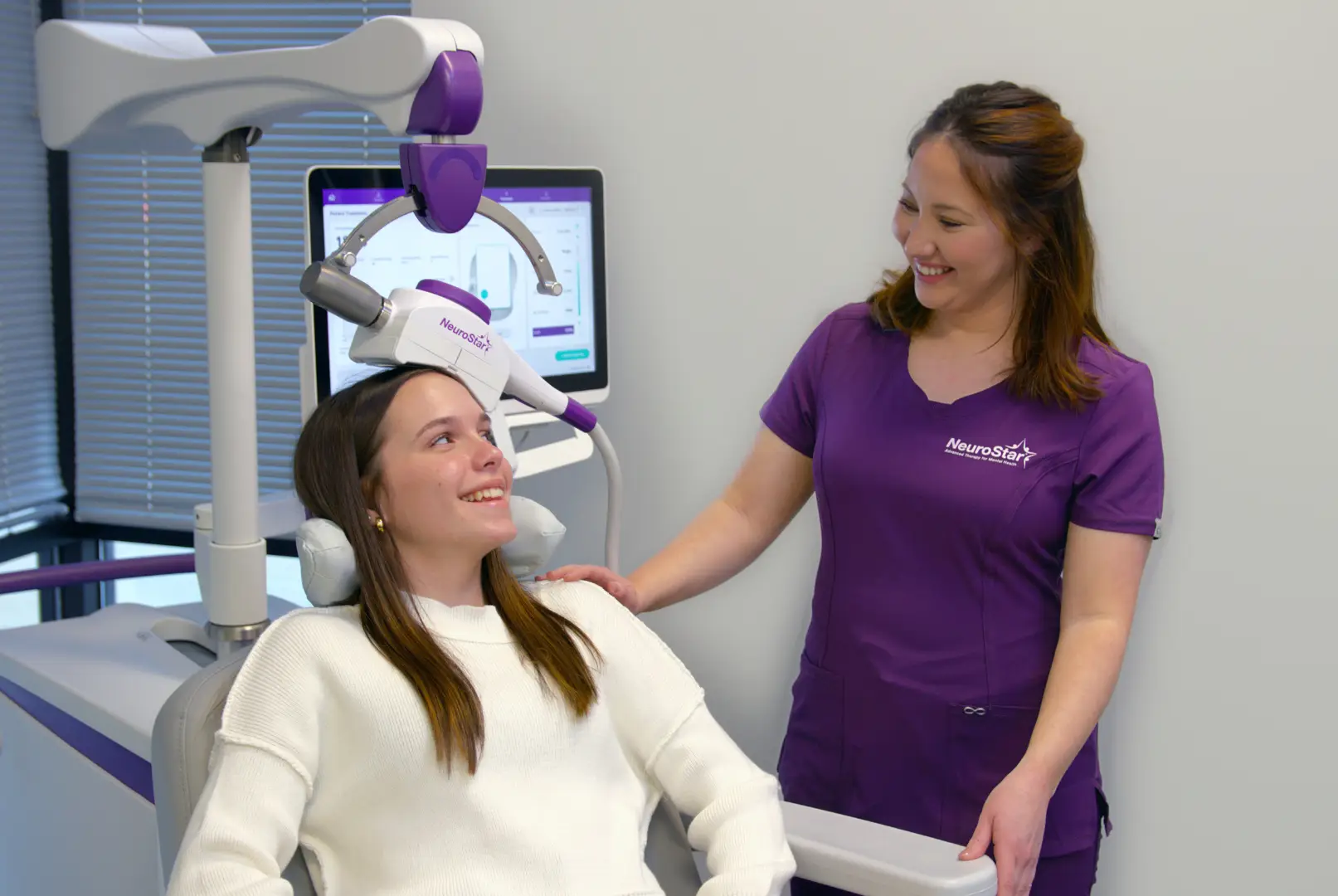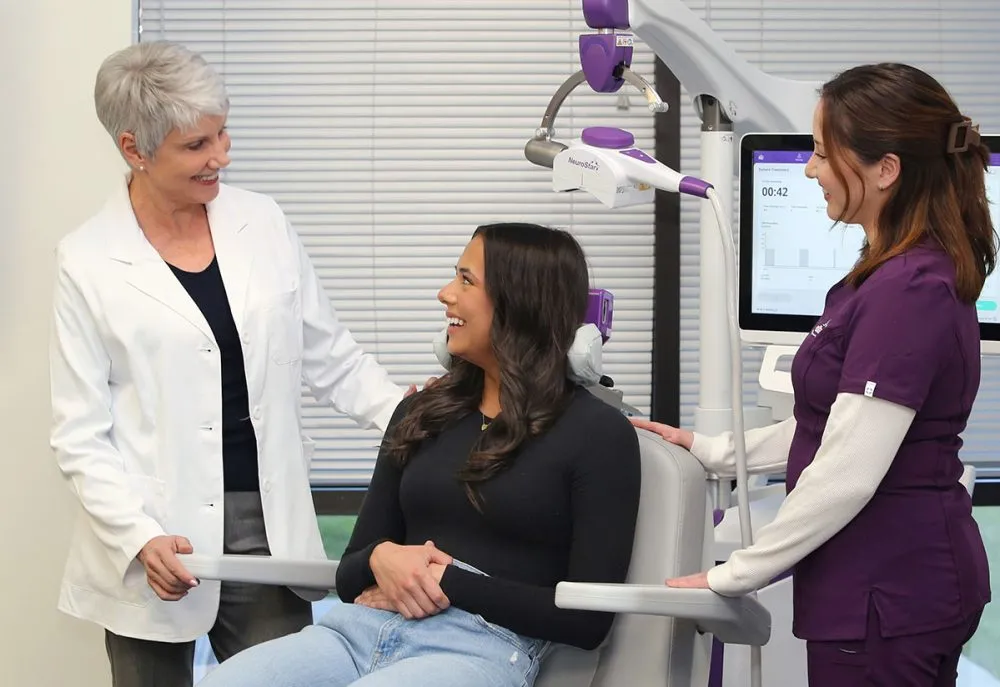You may have heard of NeuroStar TMS Therapy but are unsure about how it works. This innovative technology is used to treat conditions such as Major Depressive Disorder (MDD), Obsessive-Compulsive Disorder (OCD), and depression with anxiety. At Collaborative Solutions in Psychiatry (CSIP), we offer NeuroStar TMS Therapy as a non-invasive, drug-free treatment option for individuals who haven’t found success with traditional therapies. Read on to learn more about how TMS therapy works and how it may help transform your mental health.

NeuroStar TMS therapy works by stimulating specific areas of the brain involved in mood regulation and emotional processing, which can become disrupted in conditions like depression, anxiety, or OCD. When nerve connections in these regions stop functioning properly, TMS therapy helps by applying targeted magnetic stimulation to improve brain function. At CSIP, NeuroStar TMS therapy is administered using a special device that generates a local magnetic field by passing an alternating current through a metal coil. Unlike with an MRI, the magnetic field in TMS is more precise, targeting specific brain regions. This magnetic stimulation depolarizes the nerve cells, reactivating underactive areas and encouraging the brain to function more normally, providing significant symptom relief.
While some treatments promise immediate results, TMS therapy works through repeated stimulation. Over the course of multiple sessions, the magnetic pulses help your brain’s nerve cells return to normal functioning. Many patients report significant improvements in mood and reductions in symptoms as their treatment progresses. Most people start to feel better about halfway through their TMS treatment, but some notice changes sooner, and for others, it might take until the end. Some people also experience relief after the treatment course is completed, as progress can continue even once sessions are done.

One of the fascinating aspects of TMS therapy is how it affects areas of the brain beyond the immediate stimulation site. Researchers have observed changes in brain activity in regions far from where magnetic pulses are applied. These changes may be key to how TMS promotes healing and neuroplasticity—the brain’s ability to reorganize and form new neural connections, which can improve overall mental health and functioning.
TMS therapy may also enhance blood flow to certain areas of the brain and increase the production and turnover of neurotransmitters—the brain’s chemical messengers which play a critical role in regulating mood. By improving brain function at multiple levels, TMS therapy can help people find meaningful relief from their symptoms.
After completing a full course of NeuroStar TMS therapy, many patients experience lasting improvement of their symptoms. Once your nerve cells have resumed normal functioning, you may be in remission. Clinical studies show that NeuroStar TMS therapy can provide relief that lasts up to a year or more.
If your symptoms do return, you can undergo an additional TMS course to regain the benefits of the treatment.
Studies show that NeuroStar TMS therapy is highly effective for treating depression, especially in patients who have not responded to traditional antidepressant medications. In a large clinical study, 83% of patients who completed their TMS treatment experienced significant improvements in their depression symptoms. Of those patients, 62% achieved remission, meaning their depression did not return.
These results are particularly promising for individuals who have struggled to find relief through medications. TMS therapy offers a much higher rate of remission compared to antidepressants alone, making it an ideal option for patients seeking a drug-free alternative to manage their mental health.
If medication for depression or OCD has not worked for you, NeuroStar TMS therapy at Collaborative Solutions in Psychiatry may offer the relief you’ve been searching for. Our compassionate team is here to guide you through the process and answer any questions you may have. Call today to schedule a consultation and learn more about how TMS therapy can help you regain control of your mental health.
References